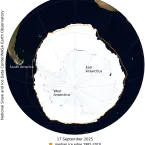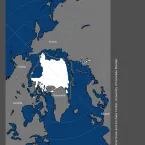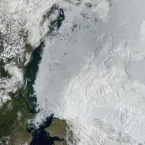
Sea Ice Today
Analyses





At the end of July 2025, daily sea ice extent in both hemispheres ranked third lowest in the 47-year satellite record. For most of the month, Arctic sea ice extent tracked close to levels recorded for 2012, the record-low-September year.




Arctic sea ice extent for March set a record low in the 47-year satellite data record. Extent was below average everywhere except the East Greenland Sea.

Arctic sea ice extent appears to have reached its annual maximum on March 22, 2025. This is the lowest maximum in the 47-year satellite record, with previous low maximums occurring in 2017, 2018, 2016, and 2015.









